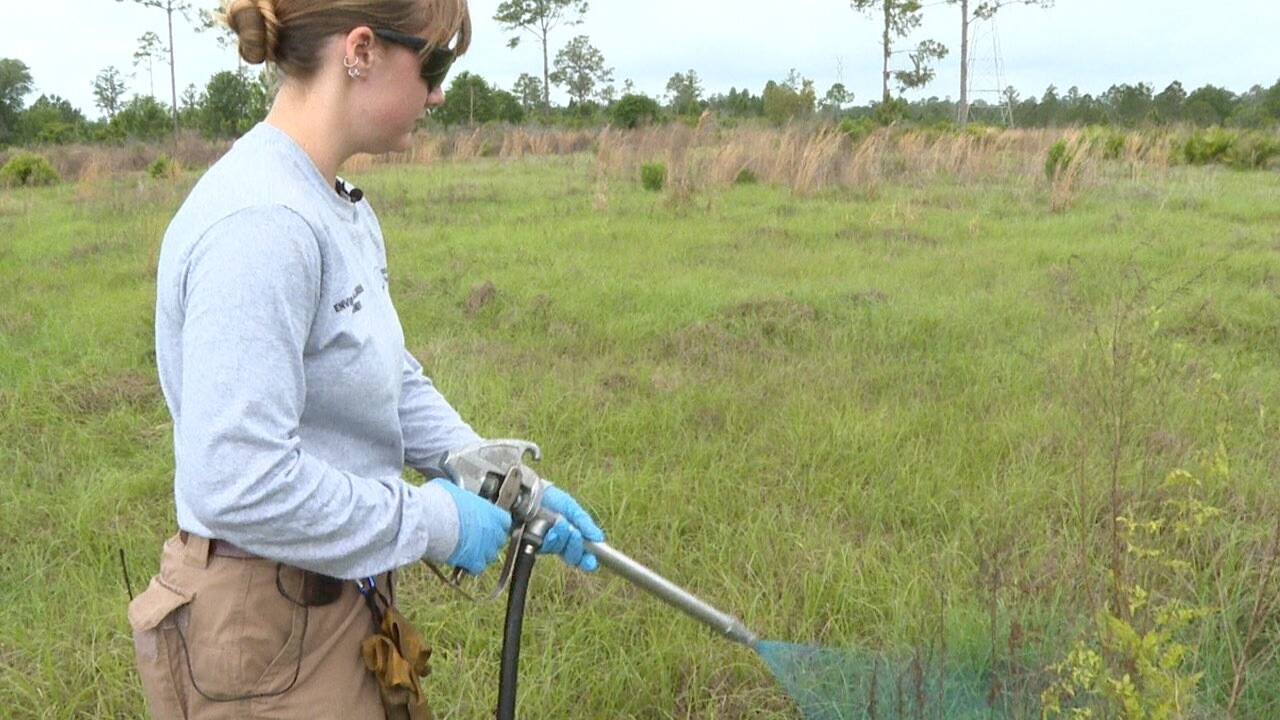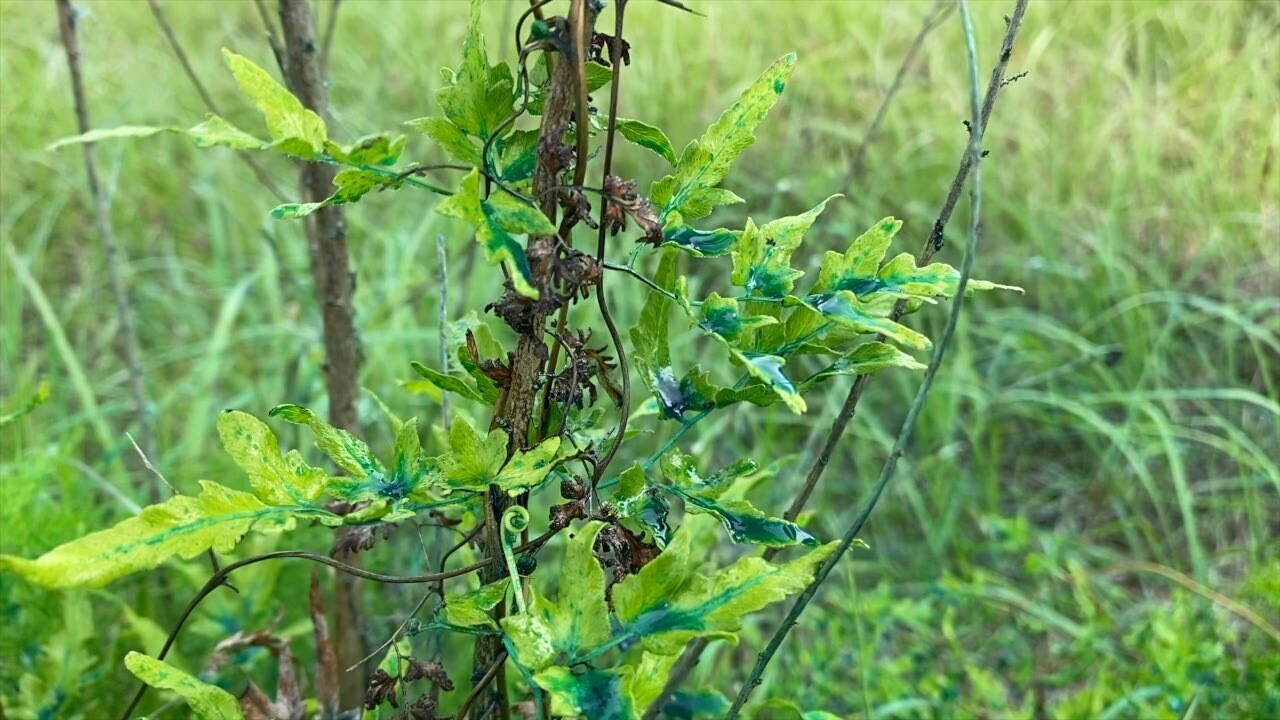HILLSBOROUGH COUNTY, Fla. — Here in Florida, nature is everyone's playground. But in our own backyard, invasive plants can take hold, and agencies across the Tampa Bay area are working to help manage and control them.
“Fun fact about this beautiful green grass. If left to its own devices, especially in an area that’s already disturbed, this grass will grow to cover literally hundreds of acres at a time,” said Rebecca Winch.
That grass is called cogongrass.
Winch is an Environmental Specialist for Hillsborough County’s Conservation and Environmental Lands Management Department. ABC Action News went out with a crew at Lower Green Swamp Nature Preserve as they work to control the infestations of invasive exotic plants.

“One of our jobs as land managers here at this site and others is to control the spread of these plants and make sure that they’re not damaging native ecosystems and crowding out native plants that wildlife need for food and shelter,” said Winch.
“In Florida, there’s about 165 different invasive plants, and about 100 of those are actively managed,” said Susan Haddock, a Commercial Horticulture and Integrated Pest Management agent with the University of Florida Institute of Food and Agricultural Sciences (UF/IFAS) Extension in Hillsborough County.
Haddock explained some ways to help get rid of one of these plants if you spot one on your property.
“If you identify an invasive plant in your landscape, you can just dig it up or cut it down, but the problem is sometimes you get more because of the seeds, so watch for those seeds sprouting out and pull them out as soon as you see them,” said Haddock.

Haddock explained there are other steps you can take to help be part of the solution and not part of the problem.
“From a landscape perspective, there are invasive plants that are available at some of our garden centers, so being aware of which ones are invasive and which ones are not is very important,” said Haddock. “These are plants that are not restricted in Florida. They can still be sold here, but we really shouldn’t be planting them. So things like Mexican Petunia and Nandina are known to be invasive, but they are common plants in our landscapes."
“If you care about Florida, you should care about whether you have native plants or whether you have non-native plants,” said Cheryl Metzger, a Park Services Specialist for the Park Service.
Metzger gave ABC Action News a look at some invasive plants at Hillsborough River State Park. Experts say this is an important issue to keep an eye on, especially if you want to keep Florida, as the Park Service says, the real Florida.

“Non-native plants, wildlife doesn’t like it. It’s not native to Florida. It will take over Florida to the point where you will no longer have the native plant species that we all have come to appreciate and enjoy in the state of Florida,” said Metzger.
There are a number of resources out there to help identify plants. Hillsborough County has a list of invasive plants, as well as a guide on removal, disposal, and maintenance. The county also has guide for homeowners and professionals.
UF/IFAS has a guide on removing invasive plants, while there’s also an app called “IveGot1” to report potential non-native species.




